What is Figure-Ground Relationship?
Figure-Ground Relationship (FGR) is one of the most important design techniques artists can use from the Gestalt psychology principles, but unfortunately it’s always overlooked. It’s used to create proper separation from the foreground and background. It’s such an obvious technique to consider, so why is it neglected?
It boils down to quality knowledge. If we don’t know about the principles of visual perception (Gestalt theories), then we’ll never be able to control them. Some artists would rather spend money on a new camera, or paint brush in hopes of improving their art, but it’s knowledge that will change things for the better.
For example, if you don’t know of figure-ground relationship, then the foreground elements will always collide with the background elements. Sure, you could get lucky and avoid the visual confusion, but why take a risk? This is your art…your pride and joy…what you were put on this earth for…shouldn’t it be held with the highest regard?
Remember from the other Gestalt theories, the mind doesn’t want to work hard to understand what it’s looking at. If it does, then it’s not as pleasing to the viewer.
Knowing Gestalt psychology is like knowing a magicians every secret. It allows you to manipulate and control the way your amazing art is viewed by the world!

The biggest offender of figure-ground relationship is the amateur photographer that captures a photo of their friend with the illusion of a tree growing out of their head. That’s a big no-no in the professional photography world, but it happens all the time…even in master paintings (demonstrated in the video). We always must pay attention to our backgrounds in relationship with the foreground.
Of course, there are always exceptions to all of these techniques. If we purposely want the subject to blend into the background, or want to create an illusion, then we’ll have the power to take control of it. For the most part though, we will try to get a nice figure-ground relationship by having a light figure on a dark background or vice versa.
In the conceptual self-portrait photo below, I was able to capture both…a light figure on a dark background (woman), and a dark figure on a light background (man).
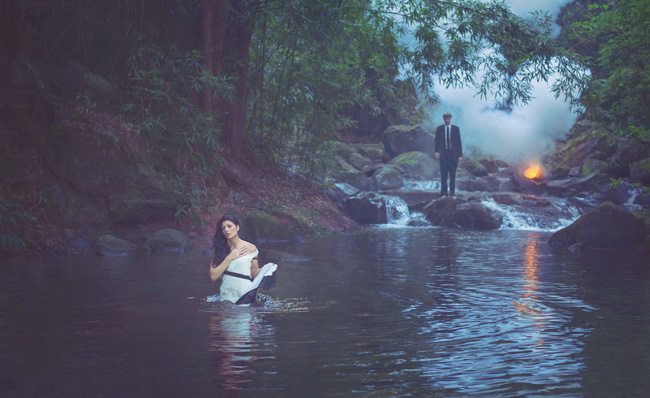
BE IN CONTROL OF FIGURE-GROUND RELATIONSHIP
In this fashion photo by Helmut Newton, we have something interesting, but it could have better figure-ground relationship. The woman is wearing a dark outfit, and her dark shadow obstructs her form…making the viewer’s mind work harder to understand what is going on. To have nice figure-ground relationship, we need the separation to be clearer.
How can we fix this?
Well, if we lighten either her shadow or her costume, then we will be able to create more contrast within her form. We can see the before (left) and after (right) picture below that shows how this adjustment helps the figure-ground relationship. Since she’s wearing a dress, it’s more difficult to correct the confusion, but I think you’ll be able to see the difference in visual clarity.
The high contrast between her legs is subdued, and the shadow on the wall is lightened…to avoid any unwanted illusions or visual confusion. She’s also got an aspective view (also covered in the video) to help identify her shape even more.
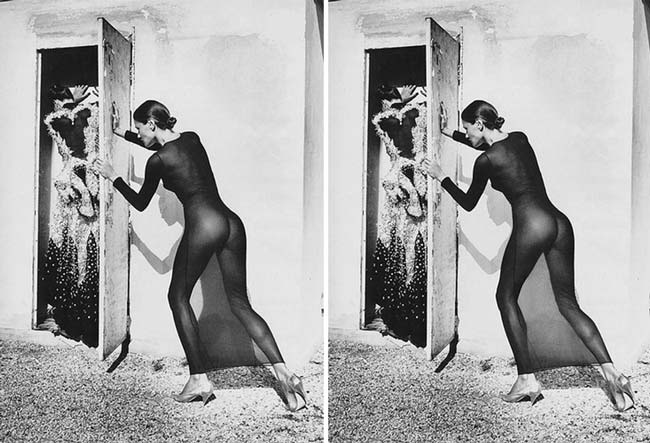
DID THE MASTER PAINTERS EVER HAVE BAD FGR?
No one is perfect, and painting is a difficult task in itself. That being said, master painters have also been known to have bad figure-ground relationship in their masterpieces. We’ll see a plenty of examples in the video, but for now we can see the one below by Jules Bastien-Lepage.
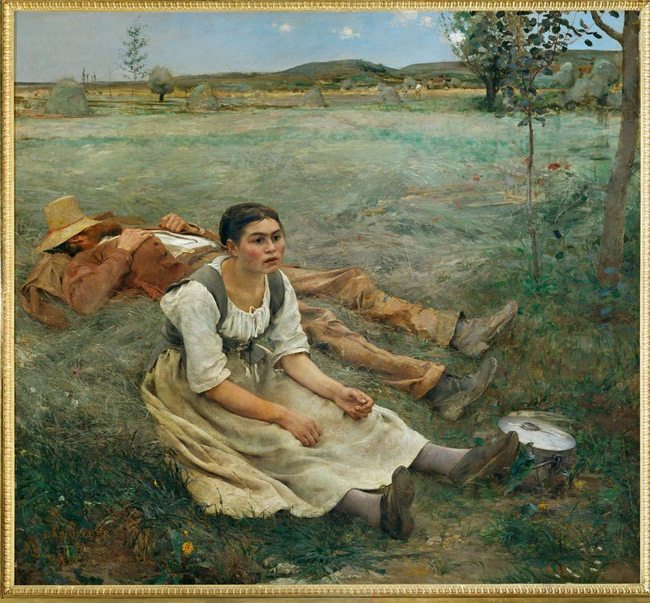
Let’s look at the contrast first. She has dark hair on a light background, which is good for our figure-ground relationship, but we’re needing sufficient contrast in other areas to improve the visual clarity.
If we run an imaginary line around her, we see that the contrast is reduced near the back of her head and her shoulder. This makes the foreground and background collide.
To top it off, the woman’s head is in close proximity (also see Law of Proximity) to the groin area of the man. This creates an unwanted illusion. It’s a great painting, but we want to be in control of how the viewer perceives our art.
How do we fix this issue with figure-ground relationship?
We do the same as the last image…try to subtly increase the contrast of the concerning areas. The placement of the subjects would have to be reconsidered as well, since we would still have the questionable illusion.
In the adjusted photo below, I completely removed the man from the background to show you how simple, yet pleasing it is for the viewer. The visual clarity is much better, and this is what we are striving for when incorporating figure-ground relationship, and all of the Gestalt psychology principles.
Squint your eyes, and you can still clearly identify the form. Elite artists will understand how to use these composition techniques to their advantage to powerfully control the visual perception of their art.
Wanna learn more about how to control the way people see your photos or paintings? Consider grabbing the Gestalt Psychology video collection. You won’t find anything else like it in the world, and it will seriously make you see things differently…forever.
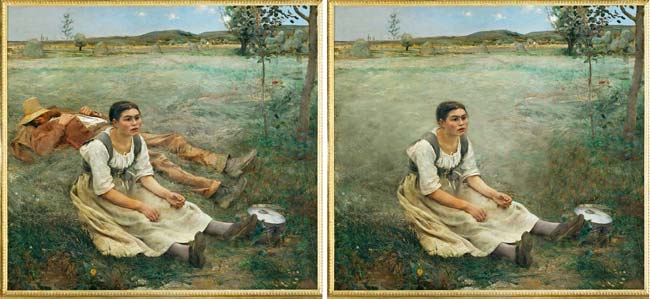
STATEMENTS ABOUT GESTALT PSYCHOLOGY PRINCIPLES
Here are some inspiring emails from artists wanting to advance to the master level!
*****
Hi Tavis,
Thank you so much, I can’t wait to get started! A couple of months ago I read an article by New York photographer Chris Knight (also boyfriend of fashion photographer and CreativeLive educator Lindsay Adler) which mentioned the Gestalt theory and triggered my curiosity. Through quite a lot of searching for more information I ended up on your site and to be honest, I’m probably more excited than on the day someone told me very kindly I needed to learn about lighting.
As a photographer I have always (until now) focused on technique, lighting, posing, expression, etc, etc, to improve my images, but always relied on “intuition” and the rule of thirds for composition. So I am very grateful for your information on the matter, especially as it seems to be overlooked by many of my colleagues.
Very best wishes,
Ernesta
*****
Hi Tavis, I have been diving into your work religiously in my off time and I can already tell I’ve struck gold. What you have created is exactly what I was looking for which I couldn’t find elsewhere. I remember stumbling upon some gestalt info in the past but it was related to graphic design and I dismissed it because I couldn’t easily relate it to my own art, but you go through and show exactly how it relates to 2d art in a way that is easy to digest and apply, and the dynamic symmetry has been blowing my mind. It’s one of those moments where I can tell my art is going to take a quantum leap forward as long as I do everything I consciously can to master this methodology. I am truly thankful for your work and effort in creating this, my friend.
Thanks again Tavis!
Daniel Dust
*****
Hi Tavis,
I was able to download the rest of the Gestalt Video Collection! Watched them all already. Can’t wait to start applying them to my work!
Thank you once again, ?
Reenashan
What Does the Video Cover?
This second video covers Figure-Ground Relationship, a technique used for mastering composition. With plenty of examples and an on-location photo session (photos below) we will demonstrate how to effectively use techniques such as light figure on a dark background (vice versa), aspective view, and separating shapes. The figure-ground relationship video also touches on other techniques like dynamic symmetry, gamut, arabesques, and coincidences to create a masterpiece. These are all the same techniques used by master painters and they can be applied to your art, whether it’s photography, painting, or sculpting to clearly communicate to your viewer with power. This figure-ground relationship video is one of the most important tools for communicating your art with clarity!
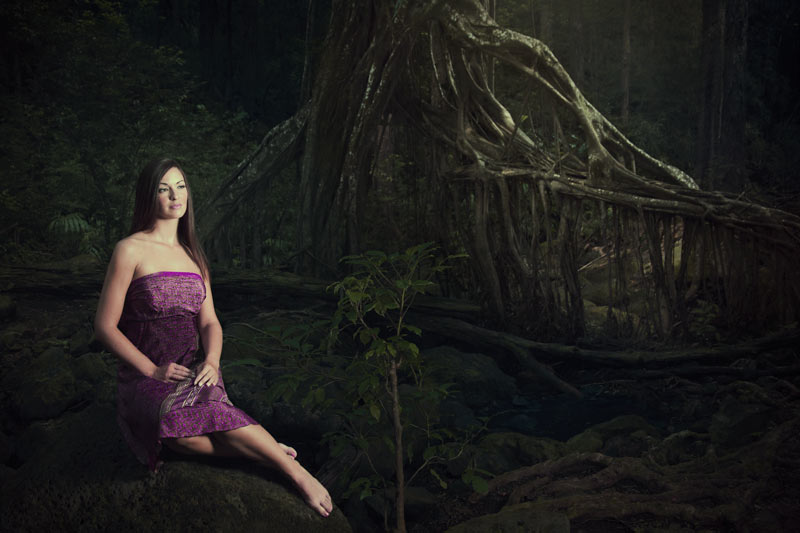
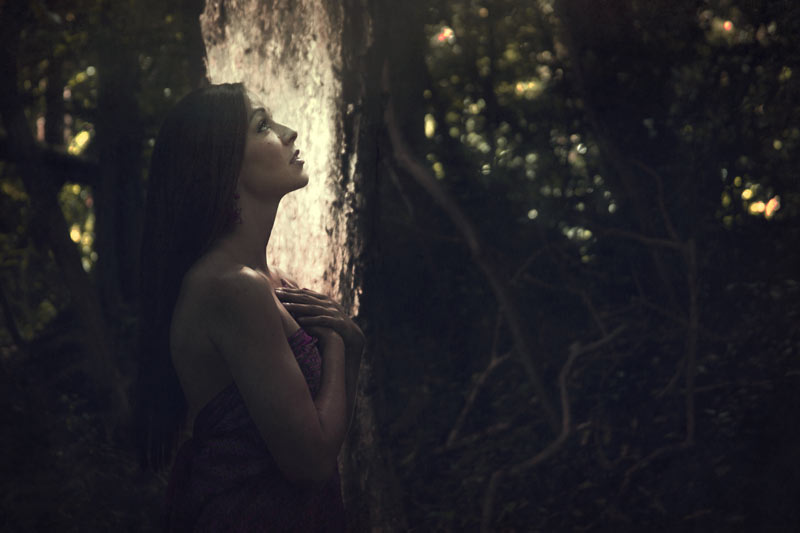
Gestalt Psychology Video Collection Preview
This is a mind-blowing time-lapse video, which shows just a fraction of the rich content within the Gestalt psychology video collection.
The best photographers learn from master painters.
The videos are concise, so you will get nothing but super juicy value for a total of an hour and a half. Saving you time, and giving you exactly what you need!
7 HD videos– Law of Continuity, Figure-Ground Relationship, Law of Proximity, Law of Similarity, Law of Pregnanz, Law of Symmetry, Law of Closure
Total Running Time: 1h 32m
HD Quality: MP4
Download Size: 895.3 MB total
In-Depth Descriptions Quick Links to
All seven Gestalt psychology videos have their own page…loaded with details.
Click on the links below to be magically transported to the secret knowledge you’ve been missing out on.
- Law of Continuity
- Figure-Ground Relationship
- Law of Proximity
- Law of Similarity
- Law of Pragnanz
- Law of Closure
- Law of Symmetry
